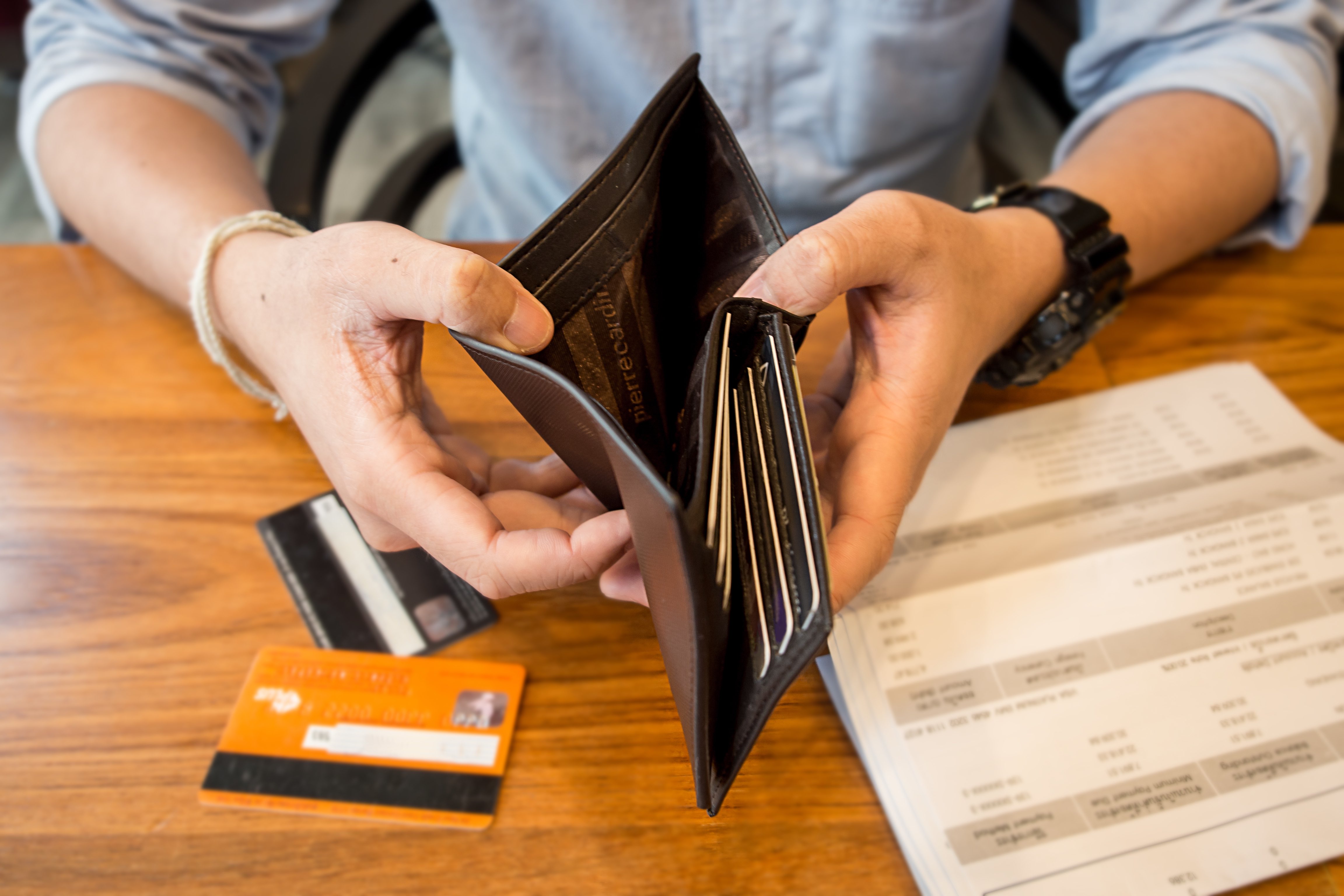
We know that racking up credit card debt is incredibly easy.
According to research from the ValuePenguin economic information platform, more than 40% of Americans hold debt, with an average balance of more than $9,000.
But here’s the dangerous fact about credit cards: they only profit you if you build credit and receive the benefits, but not if you pay interest.
With average interest rates are more than 17%, paying them off is an intelligent move, according to CreditCards.com. It is 100% worth it.
Try to avoid using your credit cards completely before you begin until you can use them without placing yourself in financial risk.
While the specifics will differ depending on your financial situation, we suggest using credit cards only if:
- You have no debt outside a mortgage or student loan.
- You have six months’ worth of savings for emergencies.
- You can pay the credit card balance in full monthly.
Whatever you do, make it the number one priority to pay off your credit cards monthly — and learn to use them responsibly.
First, determine how much debt ratio you have with your credit cards. You can use a credit bureau service, which can have a limited free trial, or a monthly service fee available.
Here are 5 ways to pay off debt from multiple credit cards:
1. The Debt Avalanche
Rather than searching for your debt as a whole, we suggest that you approach it little by little. You will experience quicker achievements and remain driven by breaking down your debt into manageable amounts.
Debt avalanche and debt snowball techniques are two common ways of breaking down debt repayments.
You will order your credit card debts from the highest interest rate to the lowest using the debt avalanche method. On all your accounts you will create minimum payments, and any additional earnings you have will go to the highest interest card.
This card will eventually be paid off. Then, with the next highest interest rate, you will attack the debt, and so on, until all of your cards are paid off.
2. The Debt Snowball
With the debt snowball method, regardless of the interest rates on the cards, you will transfer your debt from the oldest to the largest credit card. You will make minimum payments on all your cards, and with the smallest balance, any additional income will go to the credit card.
You can experience victories quicker than you would with the avalanche starting with the lowest balance. This technique is perfect for individuals who are inspired by fast wins, but it has a downside: those who choose it may end up paying more long-term interest.
Here’s an overview of how each technique would function if you paid off four different credit cards.
- $502 with 0% interest
- $6,244 with 12% interest
- $3,258 with 25% interest
- $810 with 18% interest
You would pay off card No. 3 first if you pursued the avalanche technique, followed by No. 4, No. 2 and No. 1. However, if you paid off card No. 1 first, followed by No. 4, No. 3 and No. 2, you would be following the snowball technique.
Let’s say you have $600 a month of debt. Using Dough Roller’s snowball and avalanche comparative calculator, you can see that paying all your cards off using either technique would take you 18 months.
The debt avalanche technique would ultimately save you a hundred dollars of interest, but by continuing with the snowball you would pay off your first card six months earlier.
The choice of the correct technique depends on whether you prefer to get fast outcomes or save money on interest. We encourage you to check out the calculator of Dough Roller yourself so that you can calculate the price of each strategy.
3. The Balance Transfer
A balance transfer is a great choice if you have good to excellent credit (typically a FICO score of 670 or higher) and can feasibly pay off your debt within one year.
Most of these cards with no annual charge give 0 percent interest for 12 to 18 months. They usually have a balance-transfer charge of 2 to 5 percent, but you can readily locate non-fee balance-transfer cards. A greater credit score will assist you with stronger conditions to qualify for a card.
4. Take out a Loan
Most of these cards with no annual charge give 0% interest for 12 to 18 months. They usually have a balance-transfer charge of 2% to 5%, but you can readily locate non-fee balance-transfer cards. A greater credit score will assist you with stronger conditions to qualify for a card.
With credit card debt, you may be looking into getting a loan to consolidate your debts and refinance them.
If you get a mortgage with a reduced interest rate and live off your credit cards, that reduced interest rate might save you thousands of bucks.
Consider here two alternatives: a personal loan or a home equity loan.
Personal Loan
Online marketplaces will allow you to pre-qualify for a personal loan without making a hard credit inquiry, so if you’re going to shop around, first go there. It will not have an impact on your credit score.
Home Equity Loan
You have three methods to borrow money against the value of your house if you own a house with assets: a home equity loan, a home equity credit line, or cash-out remortgaging.
- Home Equity Loan: The lender gives you your money all at once with a home equity loan, and you repay it over a certain period of time at a fixed interest rate.
- Home Equity Line of Credit: With a credit line for home equity, you are provided a lending limit. Within this constraint, you can take whenever you want as little or as much as you need.
- Cash-Out Refinance: With cash-out refinancing, you are refinancing your first mortgage with a mortgage that is mildly more cash than your present mortgage, and you are pocketing the difference.
These alternatives are most likely to give the smallest interest rates for homeowners. But they are also the riskiest because the collateral is your home — something you own that your lender can take if you don’t pay off the rent.
5. Debt Settlement
The situation of creditors and debt collections can be messy, embarrassing, and sometimes even illegal. For example, there is a common misconception that somebody can take your house or you can go to jail for not paying. But credit card debt is unsecured debt, which means that if you don’t settle it, nobody can jail you or leave your property.
If you are being harassed by creditors or have circumstances that confuse your debt repayment, do not give up before finding your assistance options.
Debt Management Program
A debt management program pays your creditors for you to ensure you stay current on your debt payments. Your credit score may even improve during the program. But if you miss a payment, you can be dropped, and you’ll lose all the benefits you gained.
Debt management plans don’t generally decrease your debt, but they can lower your interest rates by as much as half or stretch your billing timeline to render your debt payment more manageable.
Credit Card Debt Settlement
If you’re in more than a temporary season of financial instability and you can’t see yourself paying the quantity of credit card debt that you charge, credit card debt settlement is an alternative, even though we consider it a last resort.
You can do this on your own, but most individuals are seeking assistance from a debt settlement firm.
Like a debt management program, a debt settlement firm will settle debt on your behalf, and the business will create lump-sum payments to investors as you create monthly debt settlement payments to the business.
Bankruptcy
Another last resort is bankruptcy. Chapter 7 and Chapter 13 are the two main types for individuals.
Both options for bankruptcy have negative long-term consequences on your credit. But if you’re out of options, bankruptcy gives you the opportunity to take control of your debt and get creditors and debt collectors off your back.
